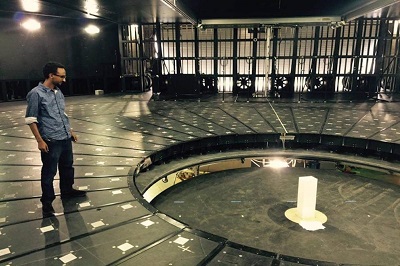 Friday, July 26, 2024
Friday, July 26, 2024  Friday, July 26, 2024
Friday, July 26, 2024 
Got news? Next submission deadline is Friday at 5:00 p.m.
Click here to submit YOUR news

New research from the UBC Okanagan’s School of Engineering and Western University provides a roadmap to safer building designs in tornado-prone areas.
With the exception of nuclear facilities, current building codes across North America do not specifically address tornado risk. This is due to a variety of factors including the low probability of occurrence and costs, explains Matiyas Bezabeh, a graduate student at UBC Okanagan.
But tornados do happen—even in Canada. On Sept. 25, six tornados with wind speeds between 135 and 175 kilometres per hour touched down in the Ottawa-Gatineau region, causing $300 million dollars worth of damage. And in 2011, a tornado in Goderich, Ontario caused about $110 million in damages according to insurance estimates.
America’s Wind Hazard Reduction Coalition also states that tornadoes claim nearly 100 lives each year in the United States and account for nearly a billion dollars in property damage.
“The potential damage of tornadoes is extensive, so as structural wind researchers we have been turning our attention towards tornado-structure interactions and tornado-induced wind loads on civil structures in recent years,” said Bezabeh.
In collaboration with Girma Bitsuamlak, research director at the WindEEE Research Institute at Western University and UBC Okanagan Engineering Professor Solomon Tesfamariam, Bezabeh investigated the impact of tornado-like winds on structures. His research focuses on mass-timber buildings—those built with cross-laminated timber for walls and floors and glued-laminated products for beams and columns.
In Canada and the United States, the intensity of tornadoes is measured using an Enhanced Fujita scale (EF-Scale) based on the damage caused. According to research, buildings designed to a 1-in-50-year wind load can withstand weaker tornadoes with a low EF-Scale—wind speeds less than 175 kilometers per hour—but do not fare as well against tornadoes with higher intensities.
Keep reading on Kelowna Capital News
Watch our video and learn more about the benefits of joining Construction Links Network – the peer-to-peer network sharing platform for the construction, building and design community.
Press Releases | Project Updates | New Appointments | Awards & Milestones | Company News | New Products/Services | Brochures | Videos | Infographics | Blog Sharing | Events and More